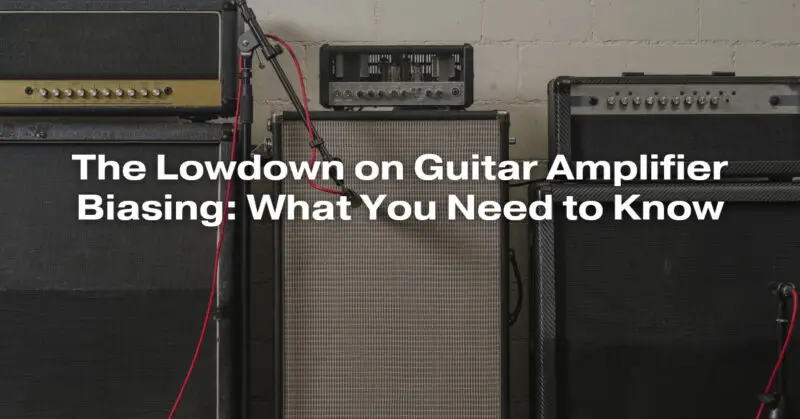Guitar amplifier biasing is a critical aspect of amplifier maintenance and performance. Biasing ensures that the amplifier’s vacuum tubes (usually found in tube or valve amplifiers) operate within their optimal operating range. Proper biasing not only affects the tone but also extends the lifespan of the tubes. Here’s what you need to know about guitar amplifier biasing:
1. Biasing Basics:
- Biasing involves setting the voltage that runs through the vacuum tubes in your amplifier. This voltage determines how the tubes amplify the guitar signal. Proper biasing ensures that the tubes are neither under-biased (cold) nor over-biased (hot). Incorrect biasing can lead to poor tone, premature tube wear, or even tube damage.
2. Tube Types:
- Different types of vacuum tubes (e.g., EL34, 6L6, 12AX7) have different biasing requirements. It’s crucial to know the type of tubes your amplifier uses and their recommended biasing values. Consult your amplifier’s manual or contact the manufacturer for this information.
3. Fixed vs. Cathode Bias:
- Amplifiers can use either fixed bias or cathode bias. In fixed bias, the bias voltage is set externally, often requiring adjustment by a technician. Cathode bias, on the other hand, self-adjusts and is more forgiving for users but may have a slightly different tonal character.
4. Adjustable vs. Non-adjustable Bias:
- Some amplifiers offer adjustable bias controls that allow users to fine-tune the bias voltage. Others have non-adjustable bias settings that require professional servicing to change.
5. Biasing Procedure:
- If your amplifier has adjustable bias, here’s a simplified procedure for biasing: a. Power off and unplug your amplifier. b. Remove the amplifier’s back panel to access the tubes. c. Locate the bias adjustment points and use a multimeter to measure the current flowing through the tubes (measured in milliamps or mA). d. Adjust the bias controls according to the manufacturer’s specifications until the correct bias current is achieved. e. Reassemble the amplifier, power it on, and let it warm up before playing.
6. Biasing Safety:
- Biasing involves high voltages, so safety is paramount. If you’re not experienced in amplifier repair and biasing, it’s best to have a qualified technician perform the procedure to avoid electrical shock or damage to your amp.
7. Bias Drift and Maintenance:
- Over time, bias settings can drift, leading to tonal changes and tube wear. It’s a good practice to periodically check and adjust bias, especially if you play your amplifier regularly. Biasing is often part of routine amplifier maintenance.
8. Tonal Impact:
- Proper biasing contributes to the amplifier’s tone. Biasing too hot can result in a more aggressive and saturated tone, while biasing too cold can sound cleaner but less dynamic. Finding the right bias setting often comes down to personal preference.
9. Consult the Manual:
- Always consult your amplifier’s manual for specific biasing instructions and recommended bias values. These values can vary significantly between amplifier models and tube types.
In summary, biasing is a critical aspect of maintaining your guitar amplifier’s performance and tone. Whether you perform the biasing yourself or seek the help of a professional, it’s essential to understand the basics and follow safety precautions to ensure the longevity and optimal functioning of your amplifier’s vacuum tubes.

